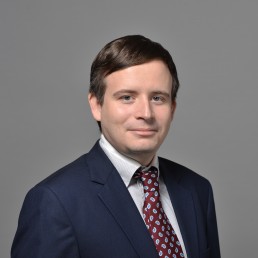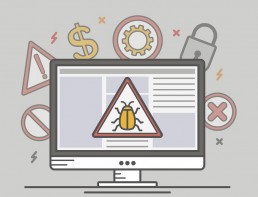Unified Threat Management Solutions to remain European Kings of the Appliances for the Foreseeable Future
IDC published a full forecast for the Western European security appliance market last month (take a look on my page of the IDC website here), and here is a deep-dive looking specifically at the UTM appliance market.
This is a critical segment of security hardware as it currently represents 58% of the total European market, a level that is expected to continue growing over the next five years.
UTM stands out from the rest of the security appliance marketplace. When looking at security products, the individual segments have all experienced ups and downs in growth rates over the past five years. The exception to this rule is the strong and steady growth enjoyed by UTM appliances.
Looking at the current situation, the Western European UTM market saw an 11.7% growth in units in Q3 2016 over Q3 2015, enjoying another double-digit growth, however, the 2.8% associated revenue growth mean that on average, again this quarter, lower value volume appliances were shipped. The value growth for the full year 2016 is expected to be in the 7% ballpark.
By 2020, UTM appliances are expected to represent nearly 66% of the total security appliance market value, and over 80% of units shipped and is anticipated to grow at 8.8% CAGR, covering organizations of all sizes – from remote office to enterprise grade level. IDC believes that a shift has started to occur in Western Europe and enterprise are planning their security spending on more specialized security appliances such as STAP, anti-DDoS, DNS security and Encryption, with higher-end UTM and NGFW products taking a good share of the market through the integration of appliances functions.
UTM solutions have been the main driver for the total security hardware market in Europe for some time now. UTM solutions have always been the preferred way of delivering security for organizations in Europe, due to their ease of deployment and the advanced security functions that they offer in a threat environment. These are highly desirable characteristics given that the threat landscape is evolving faster than ever. Further growth in the UTM appliance markets will come from the addition of STAP (special threats analysis and protection) capabilities to UTM solution. This move will reinforce unified solutions, protecting them from new malware attacks that aren’t detected by traditional, signature-based solutions.
An interesting quirk of the Western European UTM marketplace is the nature of the provider landscape. Specifically, the 3 market leaders in the UTM product category (Check Point, Fortinet and Palo Alto) are way ahead of their direct competitors in terms of market share for the first 3 quarters of 2016. Fortinet shipped the most units (34% of UTM in Q3 2016), whilst Palo Alto shifted higher value appliances (about 10 times more expensive than the average European UTM selling price) and Check Point had a mix of large unit shipment and high average value appliance (thanks to a very wide product portfolio). The next tier down of UTM vendors is Sophos, Dell (SonicWall) and Watchguard, each representing between 3 and 5% share of the European market.
IDC’s EMEA Quarterly Security Appliance Tracker offers subscribers the ability to quickly and effectively respond to today’s dynamic security server appliance market by keeping pace with evolving functionality and the emergence of new models in the marketplace. It provides insight into customer trends by delivering geography-specific product line and vendor market share information in an easy-to-use product interface, enabling quick-table customization for business planning activities.
For more information on the EMEA Security Appliance Tracker or on any other Security related research, please contact the IDC European Security Practice team.
How Efficient Are Government IT Investments?
Next-Generation Endpoint Protection is Dead – So What’s Next?

Dominic Trott
Research Manager, European Security
Read full bio @DominicTrott
Whisper it, but an announcement on the 8th of February 2017 may just mark the beginning of the end for the current level of hype surrounding ‘next-generation’ endpoint protection. Slipped into Microsoft’s pre-RSA security strategy announcement, it emerged that Windows Defender will be re-branded as Windows Defender AV. Read more
2017: The Year of AI, Everywhere

Philip Carnelley
Research Director, European Software Group
In 2016, artificial intelligence (AI) celebrated 60 years since it was first recognized as an academic discipline of computing science. For most of that 60 years, AI has remained a fascinating topic, but nothing that ‘real IT’ needed to worry about. Read more






